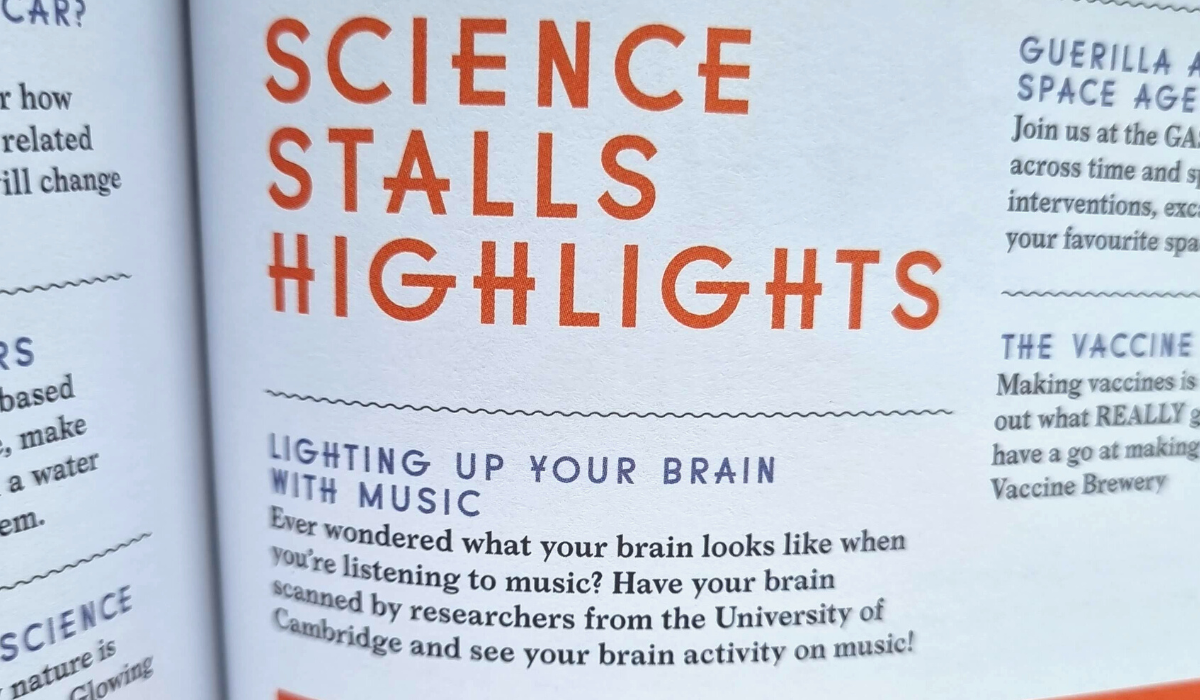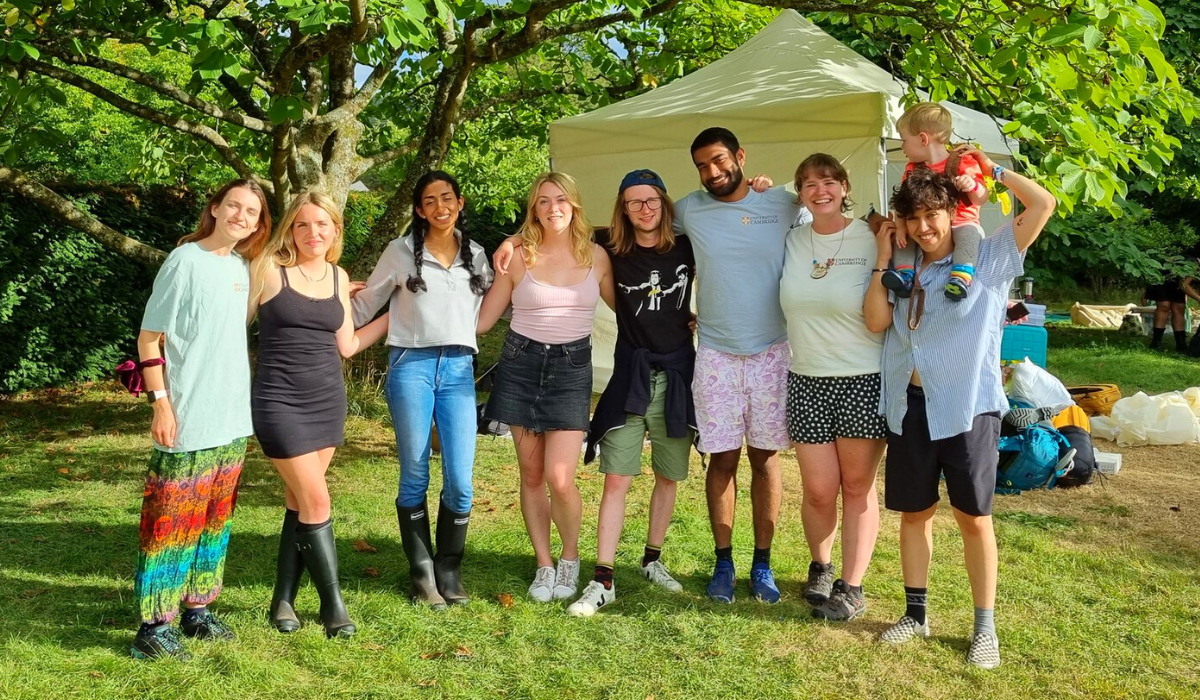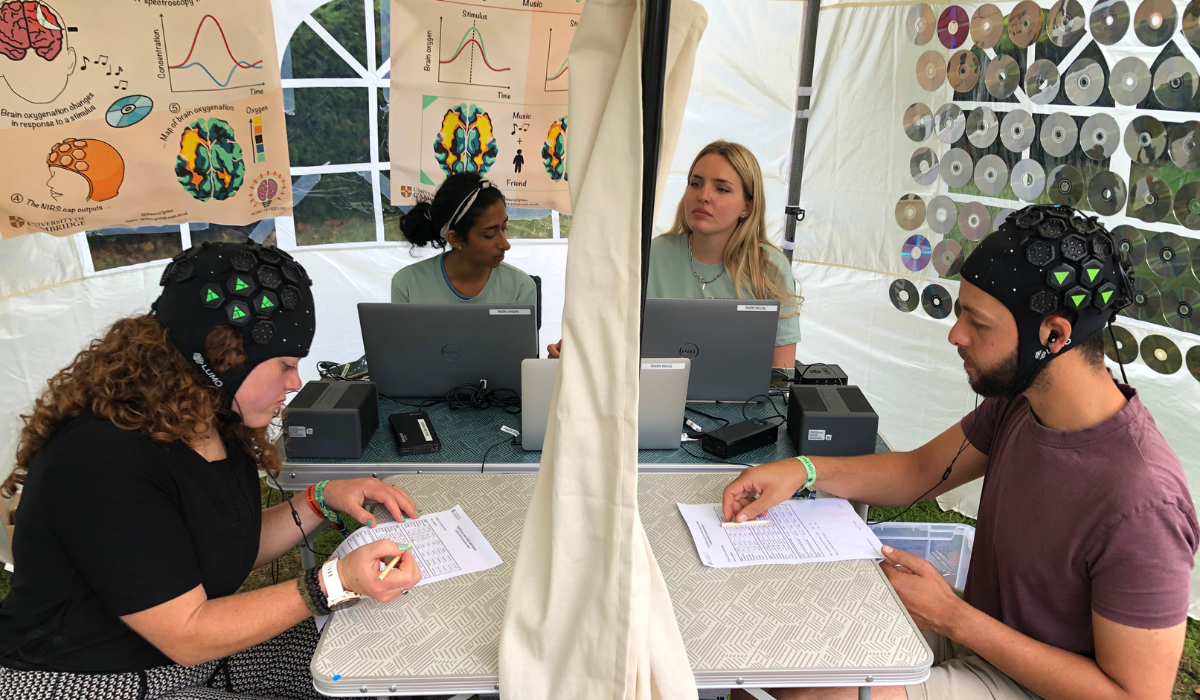Lucy PhD student, Georgina Leadley, explains how she is lighting up the brain with music.
I'm a first year PhD student in Paediatrics at Lucy Cavendish College Cambridge. I'm part of the Neuro Optics Lab based in the Departments of Engineering (Electrical Division) and Physics, run by Dr Gemma Bale, one of my four supervisors. Our goal is to develop new technologies to monitor brain activity non-invasively using light with the aim of progressing both general science and medical therapeutics.
We use near-infrared spectroscopy (NIRS) to obtain maps of functional brain activity. Infrared light is shone into the head and is scattered by brain tissue, and the change in intensity of the detected light is used to determine the concentration of brain molecules such as oxy and deoxy-haemoglobin (oxygenation) and cytochrome-c-oxidase (metabolism). These two biomarkers together give a good indication as to whether the brain is functioning correctly and are correlated with general brain health.
One of our current clinical interests is the link between dementia, memory and music. Music therapy is a powerful tool that can allow dementia patients to access old memories through music and has been shown to improve their symptoms of dementia. We want to understand more about the underlying mechanisms at play, more specifically to investigate the brain response to different types of music, both alone and in a social setting.

We devised an experiment to look at the brains of healthy volunteers while listening to music. They would first listen to happy and sad music on their own and would then listen to the same music with a friend where they can watch each other and dance along together. With enough sets of data from lots of participants, we could use machine learning to decode the link between music and memory pathways. We chose to attend Green Man festival both to share the technology our lab is developing with the public to engage with them about brain science and as it presented a unique opportunity to collect vast amounts of data. Normally, we would struggle to get a few volunteers a month, but in the four days we were at the festival we collected data from 160 participants!
The fact that we managed to get our brain imaging systems working in a field with no mains power is incredible, and the team worked tirelessly to fit the brain imaging caps, scan the head of each participant, and operate the imaging systems to deliver these data sets.

We will be analysing the results over the next few weeks and are excited to see what might be uncovered. We're very grateful to Green Man for having us and to each study participant.
You can find out more from our website and follow Gemma's other exciting projects (including dogs and seals!) at her Twitter.
I also make short science videos on my Instagram.




